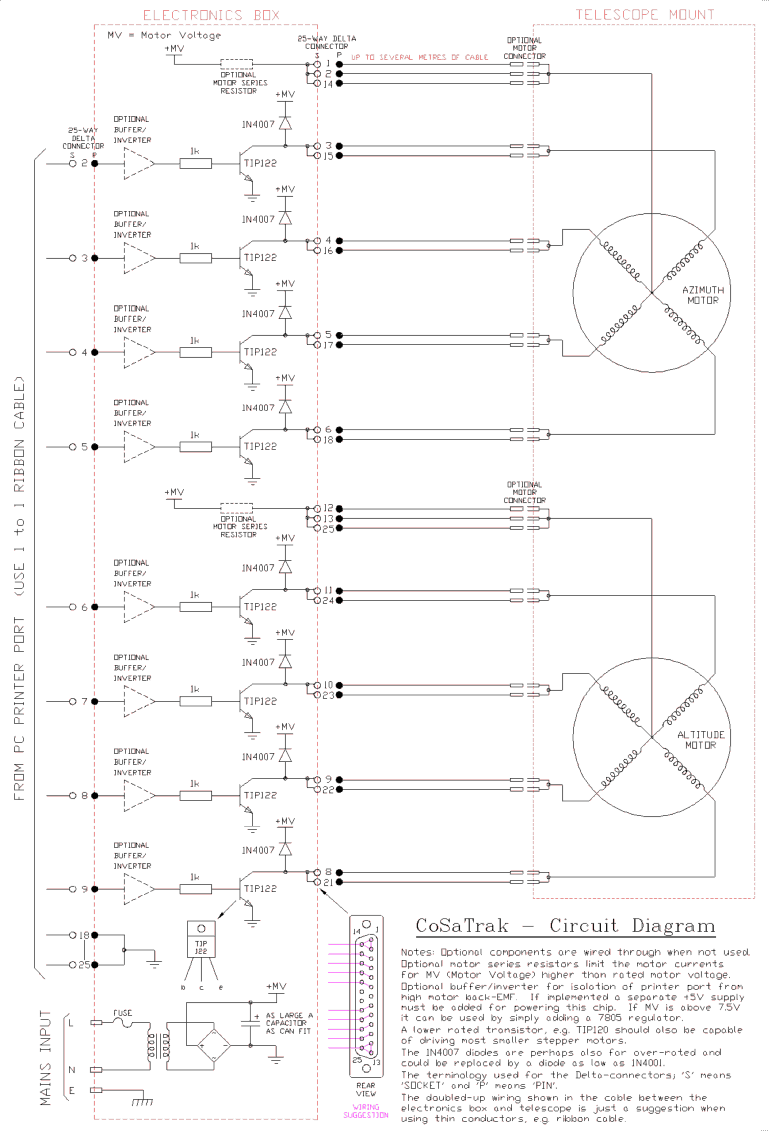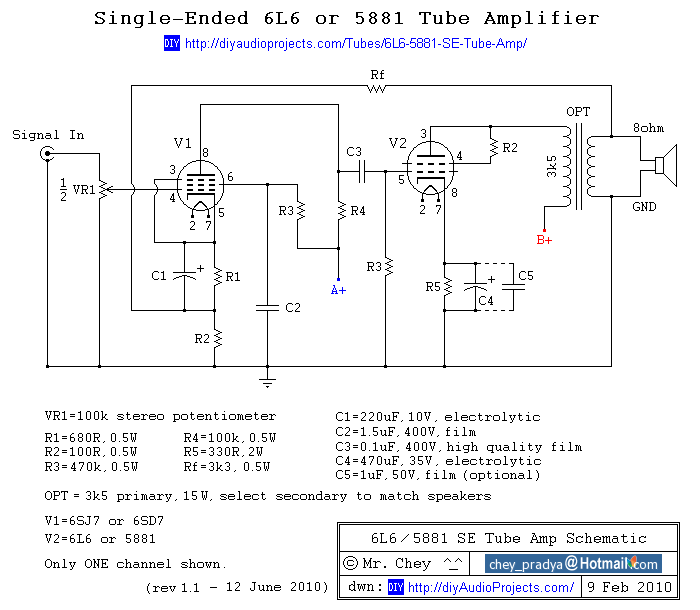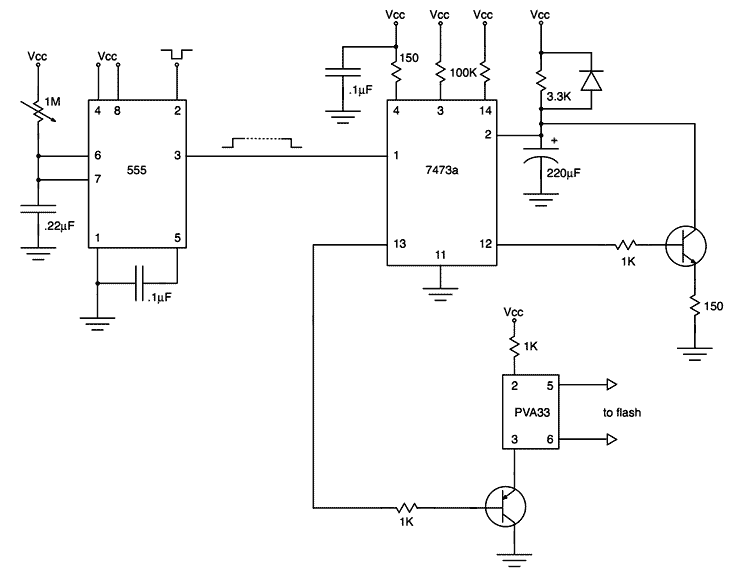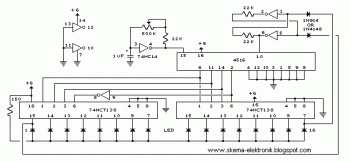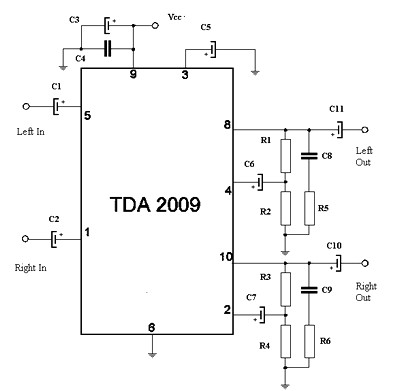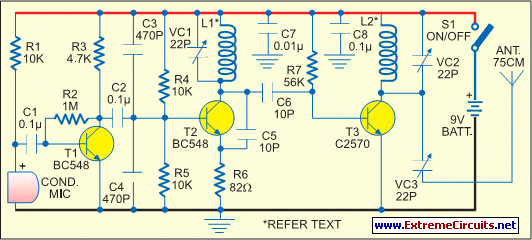
Differential amplifier circuit four connection methods and characteristics of comparison c
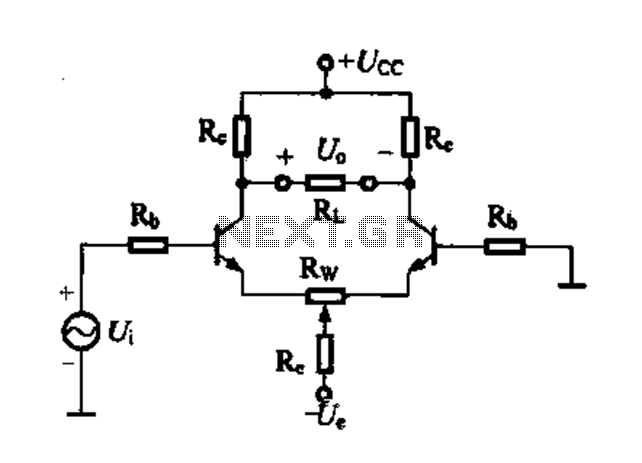
Differential amplifier circuit with four connection methods and characteristics for comparison. The circuit exhibits magnification with a single tube when symmetrical. Additionally, CMRR (Common Mode Rejection Ratio) is adapted from single-ended input to a double-ended output.
The differential amplifier is a fundamental circuit used in various electronic applications, particularly in signal processing and instrumentation. It amplifies the difference between two input signals while rejecting any signals that are common to both inputs, making it highly effective in noisy environments.
The circuit can be configured in multiple ways, with four common connection methods being:
1. **Standard Differential Configuration**: This method uses two input terminals where the signals are applied to the inverting and non-inverting inputs of an operational amplifier. The output is proportional to the difference between these inputs.
2. **Instrumentation Amplifier Configuration**: This involves using three operational amplifiers to achieve high input impedance and improved CMRR. This configuration is particularly useful in applications where the input signals are very small and need to be amplified with minimal noise.
3. **Single-ended to Differential Conversion**: In this setup, a single-ended input signal is converted into a differential signal. This is typically achieved using a resistor network that balances the input and provides the necessary phase shift.
4. **Feedback Differential Amplifier**: This configuration employs feedback resistors to control the gain of the amplifier. The gain can be adjusted by varying the resistor values, allowing for precise control over the amplification process.
The performance of a differential amplifier is often characterized by its CMRR, which quantifies its ability to reject common-mode signals. A high CMRR indicates that the amplifier effectively ignores noise and interference that is present on both input lines. This is crucial in applications such as audio processing, sensor signal conditioning, and data acquisition systems.
The magnification factor of the circuit can be influenced by the symmetry of the design. When the circuit is symmetrical, it tends to exhibit more consistent performance and better signal integrity, leading to improved accuracy in the amplified output.
In summary, the differential amplifier is a versatile and essential component in modern electronics, with various configurations tailored for specific applications, ensuring high fidelity and performance in signal processing tasks.Differential amplifier circuit four connection methods and characteristics of comparison c c. O magnification with a single tube with the same When the circuit is symmetrical. CMRR- a adapted to single-ended input into a double-ended output
The differential amplifier is a fundamental circuit used in various electronic applications, particularly in signal processing and instrumentation. It amplifies the difference between two input signals while rejecting any signals that are common to both inputs, making it highly effective in noisy environments.
The circuit can be configured in multiple ways, with four common connection methods being:
1. **Standard Differential Configuration**: This method uses two input terminals where the signals are applied to the inverting and non-inverting inputs of an operational amplifier. The output is proportional to the difference between these inputs.
2. **Instrumentation Amplifier Configuration**: This involves using three operational amplifiers to achieve high input impedance and improved CMRR. This configuration is particularly useful in applications where the input signals are very small and need to be amplified with minimal noise.
3. **Single-ended to Differential Conversion**: In this setup, a single-ended input signal is converted into a differential signal. This is typically achieved using a resistor network that balances the input and provides the necessary phase shift.
4. **Feedback Differential Amplifier**: This configuration employs feedback resistors to control the gain of the amplifier. The gain can be adjusted by varying the resistor values, allowing for precise control over the amplification process.
The performance of a differential amplifier is often characterized by its CMRR, which quantifies its ability to reject common-mode signals. A high CMRR indicates that the amplifier effectively ignores noise and interference that is present on both input lines. This is crucial in applications such as audio processing, sensor signal conditioning, and data acquisition systems.
The magnification factor of the circuit can be influenced by the symmetry of the design. When the circuit is symmetrical, it tends to exhibit more consistent performance and better signal integrity, leading to improved accuracy in the amplified output.
In summary, the differential amplifier is a versatile and essential component in modern electronics, with various configurations tailored for specific applications, ensuring high fidelity and performance in signal processing tasks.Differential amplifier circuit four connection methods and characteristics of comparison c c. O magnification with a single tube with the same When the circuit is symmetrical. CMRR- a adapted to single-ended input into a double-ended output
